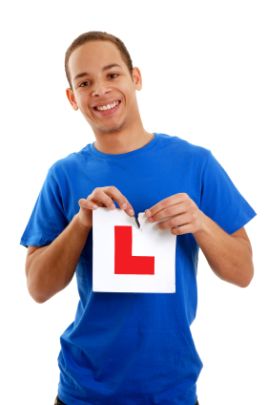Risks when driving: bright or low sun
When the sun is low and bright, it can be very hard indeed to drive. This is because we may have to squint and the bright light can make it hard to pick out objects and to see, sometimes right in front of us.
When coming to a junction or roundabout with bright sun in the eyes there is a marked increase in the number of cars that go into the back of the car in front, perhaps thinking that they have gone around the roundabout when in fact they have not - this is due to the effect of the sun making it difficult to see and make out what is happening.
If there is sun affecting your ability to see properly, then you should use the visor to reduce glare. Also be sure not to look directly at the sun because the bright glare from this can temporary blind you which is extremely dangerous.
Many drivers find it useful to drive with sunglasses on in these conditions, and that can also be good to help you with concentration because driving with your eyes screwed up is tiring and can lead to it being hard to concentrate on the road too. Similarly conditions can occur, in terms of bright glare, when the roads are very wet and the sun then comes out; in these conditions try to slow down.
Related Articles...
Dealing with nerves
Learning to drive can make people nervous, and even if you are a confident
driver then you may get nervous before the driving test itself. If this
happens to you, then don't worry. It is only...
The photocard driving licence
The new type of driving licence is a photocard, and it has several features on it that it is worth understanding once you are issued with your photocard driving licence.
It contains your...
The different types of tyre and maintenance
You might tire of talking about tyres, but these are extremely important elements of your car, being the only part that touches the road.
And they need to be in good working order to do their...
Insurance for learner drivers
If you wish to learn to drive and you ever plan to use a private car then
you need to ensure the car you are going to use has the appropriate cover.
There are various levels of cover, the...
What to look for when you see a vehicle
Here is a simple check list of things to take into account when you check a used vehicle that you are considering purchasing.
Firstly, look at the engine carefully, and see if you think it has...
Motorway Driving Tips
Driving on a motorway for the first time can be both exciting and a little daunting - exciting as it is something new whilst daunting as you won't have experienced driving on a motorway before...
DSA Driving Theory Test
Do not view the DSA Driving Theory Test as something of an inconvenience. Instead view it as a way to develop useful knowledge that could save your life or that of someone else. If that seems like...
What causes accidents: junctions
An alarmingly high proportion of accidents happen in and around junctions.
This is because of the combination of busy roads, traffic that can be nose to tail and people crossing all sorts of...
Things to look for when checking tyre condition
The tyres are extremely important elements of the car, yet many people do not think much about them when checking that their vehicle is roadworthy.
However, in addition to checking the amount...
Driving Test and Independent Driving
Independent driving - where the candidate is not following the directions given at each stage by the instructor but rather following a route, e.g. following road signs to Town X until the instructor...
Back to home page of driving theory test questions

